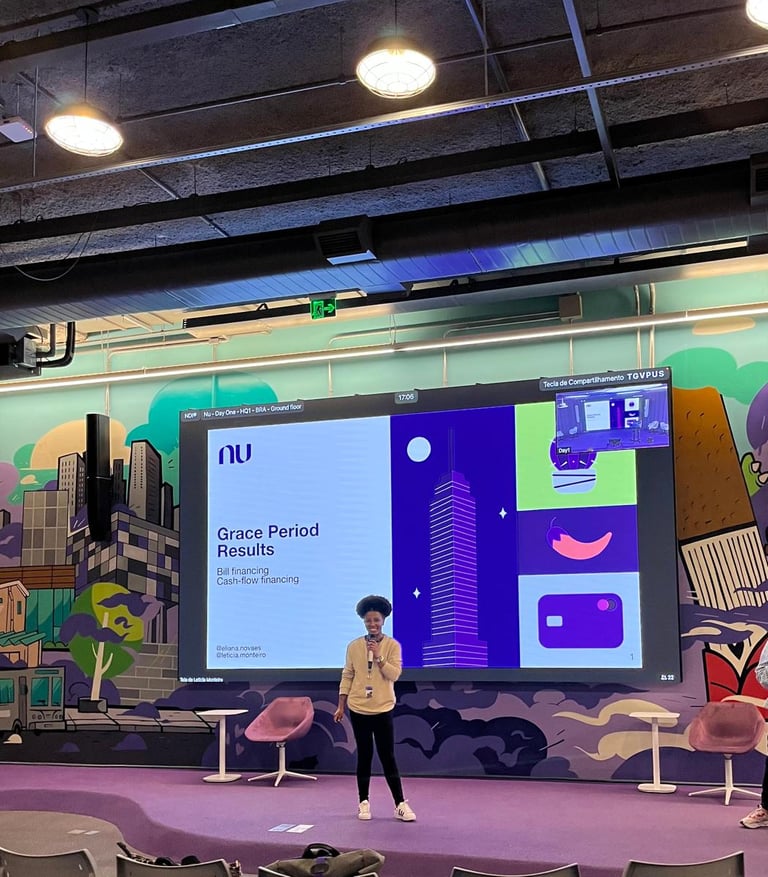Grace Period
The project arose from the need to map all financing products with the goal of making the experience simpler and more intuitive. The goal was to reduce user cognitive load and understand usage patterns across screens. The main goal was to identify improvements already implemented in other markets, not only in Brazil but globally, to increase conversion and align the experience with a more efficient and consistent standard.
Why was this done?
Usability Test


The Pix flow required validating which Grace Period approach is most transparent and clear for users.
Motivation
Hypotheses
Customer understanding: Validate whether users clearly understand the consequences of postponing the first installment payment.
Mental model: Identify whether the order of the information displayed matches the customer's decision logic.
Transparency: Test which Grace Period approach conveys greater clarity and trust to the user.
Planning
2.000 participants
Demographics
Gender Mix
Age Mix
Tool: Maze
Unmoderated usability testing
Fieldwork date
1st sample Jul 19 to 21
2nd sample Aug 1 to 5
How was it done?
We created 3 different groups for the product (Pix) with random customer characteristics:
Control version
Option A
Option B
Each group received an email with a prototype with a different design version and the same questions.
Main findings
Users preferred to choose the current or next month, demonstrating that Pix is used for immediate, non-emergency needs.
Many tried to interact with the installment payment screen, even when it wasn't part of the task.
Installment payments proved to be central to users' decisions, reinforcing the need to give this step more prominence and flexibility.
Result
Conclusions
The test allowed us to structure tasks, collect data, and analyze user interactions remotely, highlighting the importance of prioritizing critical processes, such as installment payments and grace periods, which directly impact user decisions. It also highlighted the need to focus on behaviors and intentions, map global patterns to ensure consistency and scalability, and reduce cognitive load by iterating based on real data to create clearer and more reliable solutions.